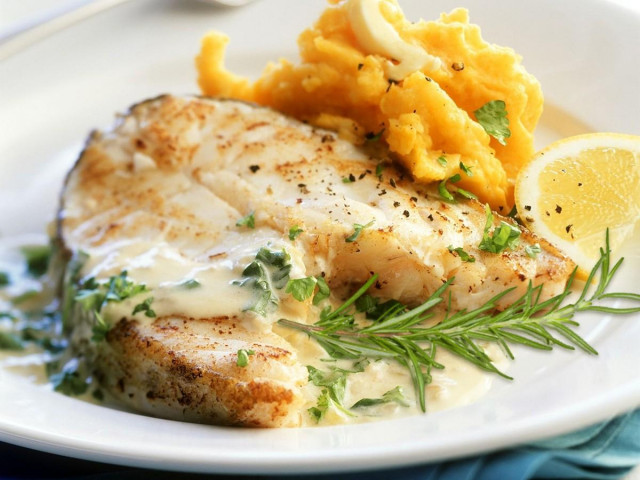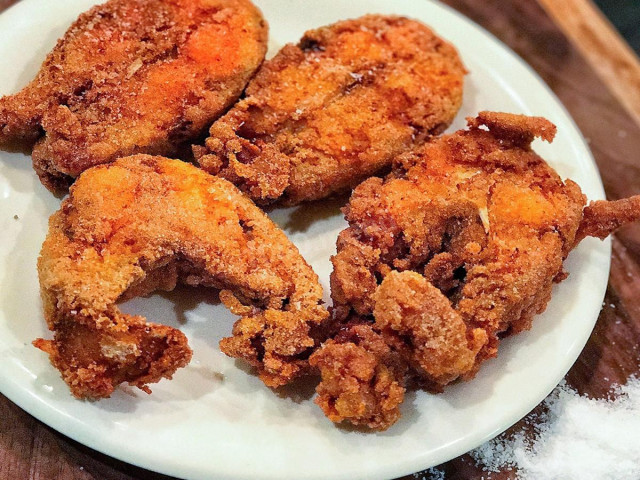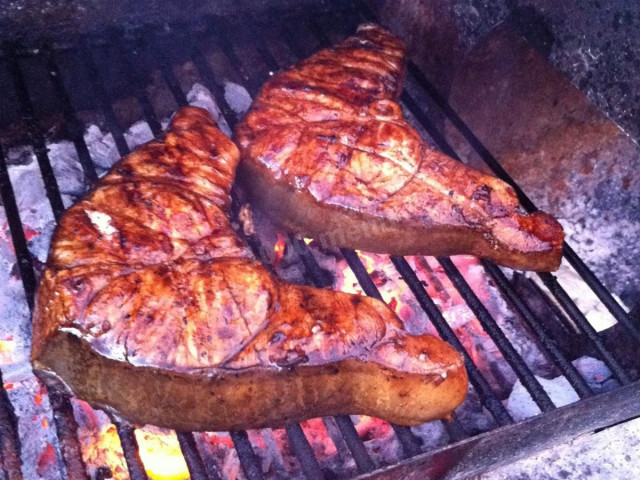Composition / ingredients
Step-by-step cooking
Step 1:
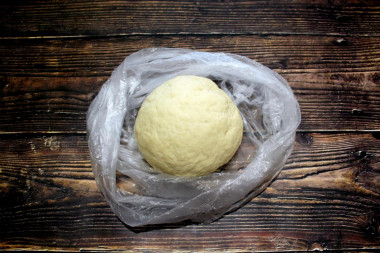
To prepare the dough, you will need only three ingredients: flour, water and salt. First you need to sift the flour of the highest grade, then add salt and pour in water. Using a wooden spatula, and then knead the dough with your hands so that it gathers into one ball. Transfer the resulting dough to a clean table and knead it for 5 minutes. After that, form a ball from the dough, put it in a plastic bag and leave it in the bag for 10 minutes.
Step 2:
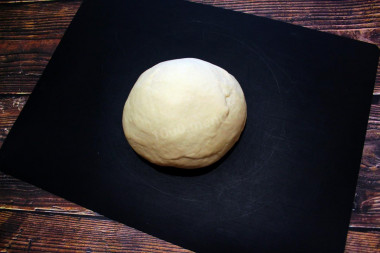
After the time has elapsed, get the dough out of the bag, it should become more elastic. Put the dough on the work surface and knead it for 7 minutes. Form a ball of dough again and put it in a plastic bag for another 30 minutes.
Step 3:
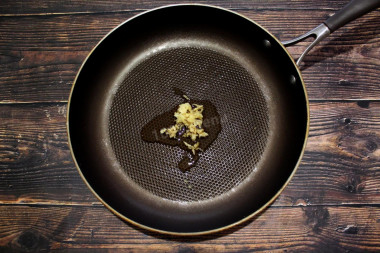
At this time, start preparing the filling for the mandu. Pour sesame oil into a frying pan, put the garlic passed through the press, and lightly fry the garlic in oil until a fragrant smell appears.
Step 4:
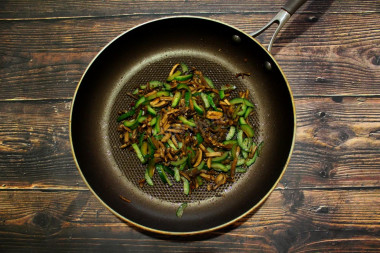
Wash the champignons, dry them and cut them into strips. Wash the fresh cucumber, cut in half, remove the middle part with the seeds and also cut into strips. Transfer the champignons and cucumbers to a frying pan and fry until the resulting liquid evaporates.
Step 5:
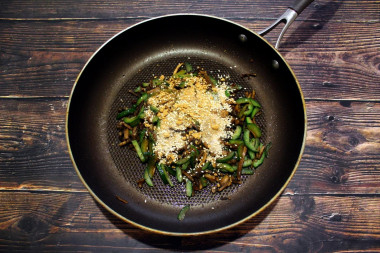
Then add spices: sesame, sugar, ground ginger, pepper and salt. Mix it up.
Step 6:
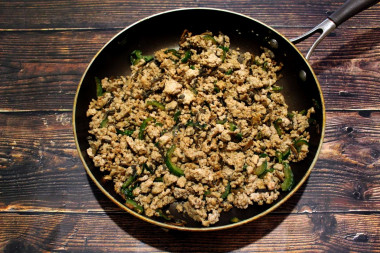
Immediately lay out the minced meat and fry it, stirring constantly with a wooden spatula so that no meat lumps form.
Step 7:

At the end of the filling preparation, add soy sauce and finely chopped green onions, stir and put out the filling for dumplings for another 1-2 minutes.
Step 8:
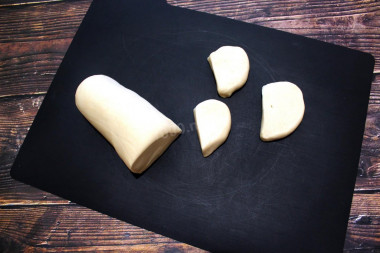
Get the dough out of the plastic bag. It should become even softer and slightly moist. Roll out the dough into a thick sausage for a more convenient division into portions. Divide the resulting sausage into 16 equal pieces (approximately 40-42 grams each). To prevent the blanks from drying, immediately put them in a plastic bag.
Step 9:
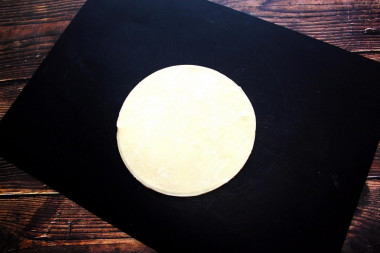
Take one blank, give it a more regular circle shape with your hands, then put it on a floured work surface and roll out the circle with a rolling pin to a diameter of approximately 14-15 cm .
Step 10:

First prepare the mandala for frying. Put the rolled dough on the palm of your hand, put the meat filling in the center of the circle and start forming a pigtail with your right hand: make a pinch from the bottom of the dumpling, direct it inside to the filling, then grab the edge of the dough on the left, pinch and send it back to the center to the first pinch, now grab the edge of the dough on the right, pinch and send it to the center to the second pinch and so on, moving forward, there should be a tail at the end.
Step 11:
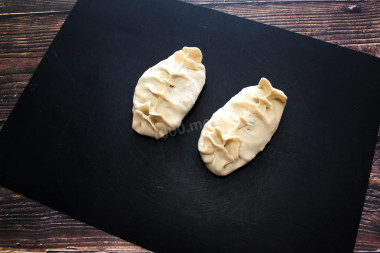
Now we make a mandala for steaming them. Put a circle of dough on the table, put the filling in the center, for convenience, first pinch the dumpling in the middle, and then pinch the mandala around the edges, forming beautiful folds.
Step 12:
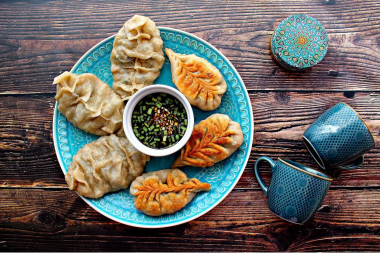
Fry the mandala with a pigtail in vegetable oil over medium heat, and send the mandala with pinches to the steamer for 40 minutes. Ready to serve mandu to the table with soy sauce, seasoning it with green onions and crushed garlic.
Dumplings are one of the most favorite dishes in many countries of the world. Their diversity is sometimes surprising. They are also prepared in different ways: boiled, fried, steamed. A special place among the dumplings is occupied by Korean mandu. Their filling includes meat (pork or beef), mushrooms, vegetables, onions, ginger, tofu, kimchi. Fillings for Korean dumplings can be interpreted. Koreans also cook mandu soup, called manduguk, but this is a completely different story.
Caloric content of the products possible in the composition of the dish
- Fresh cucumbers - 15 kcal/100g
- Champignons - 24 kcal/100g
- Garlic - 143 kcal/100g
- Ground black pepper - 255 kcal/100g
- Whole durum wheat flour fortified - 333 kcal/100g
- Whole durum wheat flour, universal - 364 kcal/100g
- Flour krupchatka - 348 kcal/100g
- Flour - 325 kcal/100g
- Soy sauce - 51 kcal/100g
- Granulated sugar - 398 kcal/100g
- Sugar - 398 kcal/100g
- Vegetable oil - 873 kcal/100g
- Green onion - 19 kcal/100g
- Dried whole sesame seeds - 563 kcal/100g
- Shelled sesame seed - 582 kcal/100g
- Salt - 0 kcal/100g
- Water - 0 kcal/100g
- Sesame oil - 899 kcal/100g
- Ginger Powder - 335 kcal/100g
- Minced pork - 263 kcal/100g


